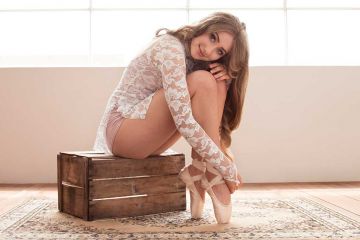The Beginner's Overview to Product Photography
If a photo is worth a thousand words, a magnificent product image deserves a thousand site visits. Although I do not have data to support that statement (yet), product photography can be very beneficial to your ecommerce site technique.
To reach your target market members who like acquiring online, you additionally need to offer your audience clear, eye-catching images of your products.
But product photography isn't as straightforward as directing as well as firing. Also one of the most basic items need the correct tools, lighting, and area to produce beautiful images that offer consumers right from the acquisition web page.
6 Product Photography Tips ( and also Examples) for Taking Pictures That Offer
Right here are the pointers, examples, as well as products you'll require to properly picture and also market your products in a manner that makes your visitors as well as leads wish to convert.
1. Don't hesitate to use your mobile phone's video camera.
This is the component where I'm expected to convince you to buy a premium, 50-megapixel (MP) video camera with a 100-millimeter screw-on lens. However I'm not mosting likely to do that.
If you already possess a video camera that fits this description, benefit from it. However, for lots of sorts of products, it's completely acceptable to fire product photos on a smartphone.
Newer mobile phones flaunt effective electronic camera lenses and settings that enable you to optimize your shots for the various kinds of light and also settings you may fire in.
If you require more convincing, just have a look at Apple's Shot On An iPhone campaign and the photos that have resulted from it for many years such as this:
2. Shoot from a tripod for photo uniformity.
Before discussing tripods, I'm obligated to start with a cardinal regulation: Don't prop your phone versus something strong to intend your lens toward the topic.
It's simply as well simple for this makeshift setup to glide around during the shoot as well as cause variances in your images' look. If you relax your camera on, state, a stack of publications, simply be sure this arrangement doesn't alter throughout the shoot.

There's no harm in holding your cam on your own when shooting simply a couple of product photos for your ecommerce internet site. Yet as your organization expands, and you take a lot more pictures of even more items, it can be tough to standardize the product's alignment in each photo when firing portable.
To make certain consistency across your items, you'll need a tripod. As well as luckily, acquiring one isn't always the big, industrial-sized financial investment it utilized to be.
Below are 2 kinds of tripods to consider.
Typical vs. Flexible
This is a practice tripod-- there are typical tripods readily available for both electronic cameras and also smartphones.
A adaptable tripod can be adjusted in a number of means. You can bend its legs as well as position it on various surface areas to get the angle you need.
Mobile Grip
There's often a screw on the top of your tripod which connects to your cam to hold it in place. The underside of the majority of professional-grade video cameras has a screw opening just for this purpose, yet mobile phones can make use of the following adapter:
The adapter holds the sides of your smart device and also can screw right into either sort of tripod, permitting you to run the video camera controls with the phone screen dealing with external and towards you.
As soon as you identify which place you'll require, establish it up in front of your product, and take into consideration putting 3 items of tape on the ground to mark where you would love to maintain each leg of your tripod throughout the shoot.
3. Choose natural light or fabricated light.

Never underestimate exactly how specific kinds of light can boost (or prevent) your product photography. Bear in mind, purchasers get the most effective look at an item face to face, where they can see whatever they require to before getting. The best lighting arrangement aids you disclose those critical decision-making product functions when all web site visitors have to go on is a photo.
A single lights configuration might not benefit every product-- a lighting plan that helps some items may compromise the appearance of others.
There are two sorts of light you can select as your major light: all-natural and man-made light.
Natural Light
Natural light describes sunshine-- straightforward as that. It's also called "soft light" since the sun casts a bigger, softer series of light than, claim, a light beaming straight on the product. Ecommerce product shots prosper in natural light if:
The product is shot outside or indicated to be used outside.
The product is used by, endured, or shot with a individual (people have a tendency to look much better in all-natural light).
You're trying to emphasize the product's surroundings, rather than particular qualities of the product.
Right here's an instance of a shot utilizing natural light:
Artificial Light
Synthetic light includes candle lights, fire, and extra typically, light bulbs. It's also referred to as "hard light" due to the fact that it produces a smaller sized but a lot more concentrated light surface area. This sort of light caters to items with physical details that need to be highlighted to thrill an online customer.
As a basic rule, stick to just one type of light per photo-- natural or fabricated. Adding all-natural light to an synthetically lit photo can soften a product that's indicated to look sharp, and including man-made light to a naturally lit photo can develop a product that's meant to look soft. You don't intend to enter your own way.
4. Fill up or jump your light to soften darkness.
Whether you utilize all-natural light or fabricated light, you'll require to decrease the darkness that any possible difficult light casts on the contrary end of a product.
There are three ways to do this:
Fill Light
Consist of another, less-intense light source to supplement your main light. This extra light is called your fill light and is made use of as a counterbalance to soften the all-natural darkness your primary light produces behind an object.
To do this, place your fill light opposite your main light so your product sits between both light sources.
Flashbulb Bounce Card

A bounce card, or reflector card, is a tiny card that " shows" or "bounces" the major light back onto the surface beneath your product to lower darkness.
Some bounce cards affix to the flashbulb of a specialist video camera lens to diffuse the light from the video camera's flash. This card sprays a softer light onto the subject from over your set-- rather than right at it-- so you do not have long darkness trail behind the item you're firing.
Standalone Bounce Card
If you're shooting from a smart device, a flashbulb bounce card isn't an alternative, given that you do not have a physical flash you can affix it to. Instead, make your own standalone bounce card placed opposite your major light.
For newbies to product photography, this bounce card can successfully change your fill light, which counters the tough light from the electronic camera flash or lamp that's encountering toward the front of your product.
5. Make use of a sweep or picture setting to stress the product.
There isn't one ideal way to position your product, lights, and jump cards-- they can transform significantly depending on your history. Yet don't choose a background based on what's easiest to create. Histories must appear like how you desire your customers to perceive your product when seeing it online.
Take into consideration initially whether you 'd such as a white background or a extra dynamic, real-world background. There's an easy way to achieve every one.
White Background: Move
For white backgrounds, it's not as easy as setting up a table against white drywall. Also smart device electronic cameras can get little acnes on a white wall that you would not notice with the naked eye. To catch a best campaign photographer gold coast white history without edges or imperfections, make use of a sweep.
A move is a huge flexible sheet of paper, whose bottom work as the surface area under your product and then curves up into a white wall behind the product.
On electronic camera, the move's contour is undetectable, stressing crucial product information as well as enabling the item to have all of a internet site visitor's focus.
Real-World History: Picture Mode
Dynamic, real-world backgrounds are very enticing when capturing products that have a particular usage or are being designed by a person-- as you saw in the picture of the brief-case earlier in this guide.
But, it's very easy for a real-world background to steal the focus of the photo, making it unclear which item in the photo you're in fact offering.
Offer your product depth and emphasis with portrait setting, a photo setting on the majority of professional cameras, as well as also readily available on numerous new mobile phones. This setting obscures the history so the context of the product is clear however not completing versus the product itself.
Below is a very outstanding photo of a HubSpot pen taken in portrait setting on a Google Pixel 2 (I took this image myself). You can inform the pen rests on a workdesk with a computer behind it, however the pen is still the centerpiece for customers:
6. Shoot a range of photos.
My last ecommerce photography pointer to you is to not stop at one photo per product. Just as your customers look, hold, make use of, and also try out merchandise in a shop, your website must fire a variety of images to imitate this really experience.
If you're firing apparel, for instance, capture the garment of garments alone-- that is, expanded on a white surface-- along with on a mannequin whose shade contrasts the color of the product.
Then, for extra photos, have the apparel modeled on a individual, allowing you to take pictures of the product from the individual's various positions as well as angles.
Product Photography Set Up
Next, let's summarize what we just received-- right here's a listing of quick product photography set up suggestions that you can refer to and also share on your group:
• Decide on a video camera-- whether or not that suggests using your smartphone.
• Obtain a tripod that works for your camera of option.
• Select natural or fabricated lighting-- think about which choice is best for your product as well as environment.
• Determine whether you'll fill or bounce light.
• Select sweep or picture setting.
• Take several various pictures to provide your customers selection.
Get Started With Your Product Photography
Don't really feel required to purchase every idea as well as tool at the same time. Use these product photography ideas slowly to see what makes your store look one of the most nice, and also change your approach as your photography chops get better.